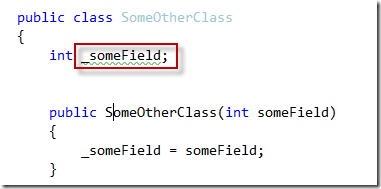Delphi Identifier Naming Conventions


| [size=+2] Delphi Identifier Naming Conventions |
| [size=-2]How to name all those variables and components you use in your daily Delphi programming. |
| Exception | E | EMyError = Class(Exception) |
| Classes and Types | T | TMyClass = Class(TObject) |
| Fields in classes | f | fVisible |
| Events | On | OnMouseDown |
| string | s | sSurName |
| Boolean | b | bIsThisOK |
| Integer | i | iBirthYear |
| Pointer | p | pMePointer |
| DateTime | dt | dtBirthday |
| Currency | cur | curSallary |
| Form | frm | frmMain |
| Button | btn | btnOK |
| Label | lbl | lblName |
| Edit | ed | edPassword |
| ComboBox | cbo | cboFont |
| ListBox | lb | lbFiles |
| Table | tbl | tblMaster |
| Query | qry | qrySumChild |
| DataBAse | db | dbDataBase |
| PaintBox | pb | pbMyPicture |
| MediaPlayer | mp | mpMP3Player |
| OpenDialog | OpenDialog | OpenDialog |
| Welcome to CnPack Forum (http://bbs.cnpack.org/) | Powered by Discuz! 5.0.0 |